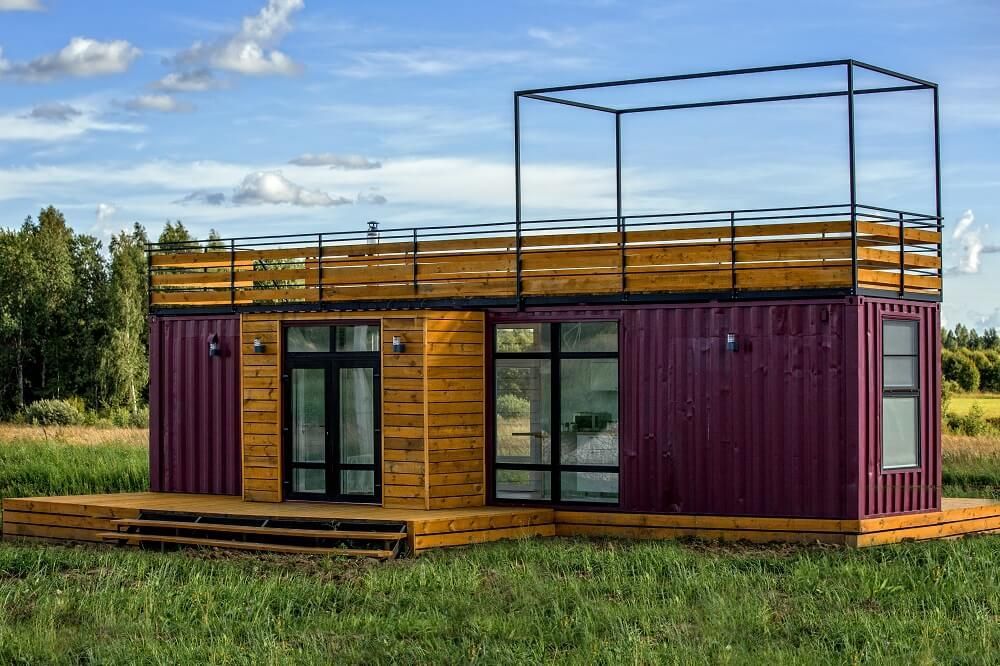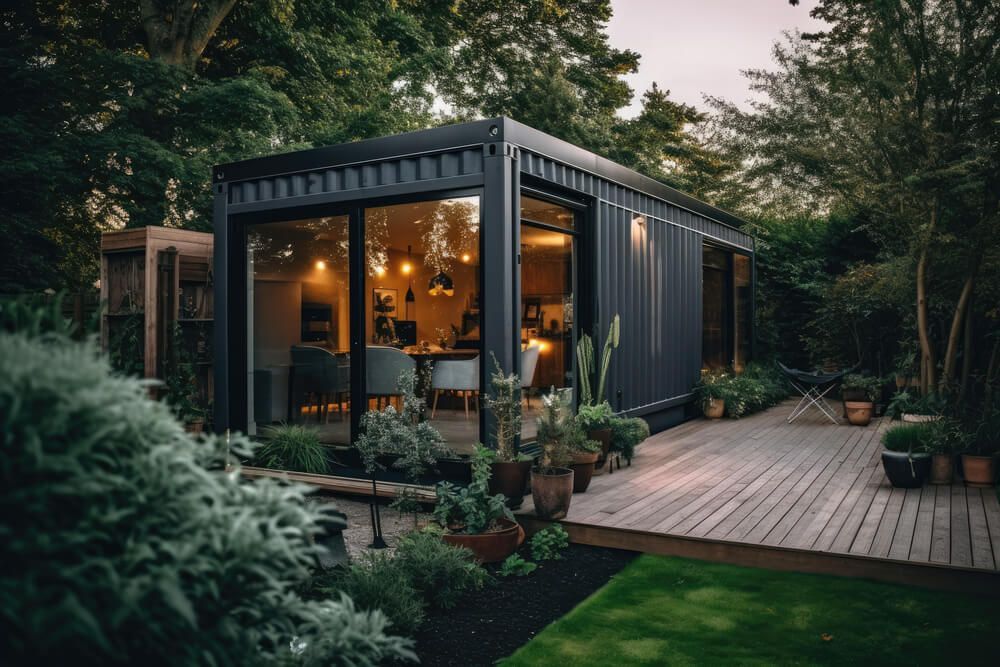Navigating Building Codes and Permits for Container Homes: What You Need to Know
Navigating Building Codes and Permits for Container Homes: What You Need to Know

Building a container home can be both exciting and challenging. With the promise of affordability and sustainability, it's no surprise that many are drawn to this innovative housing solution. However, understanding the building codes and permits required is important for a successful project.
Understanding Building Codes for Container Homes
Before starting a container home project, it's important to understand building codes. These rules are in place to ensure homes are safe, durable, and functional, and they apply differently to container homes because of their unique design. Navigating building codes for container homes means understanding that these structures begin as recycled shipping containers, which were not originally designed for living. This means that modifications must be made to meet the residential standards set forth by local authorities. The container home construction codes often require adjustments or reinforcements to the container's structure to accommodate insulation, plumbing, and electrical systems, ensuring they align with traditional housing standards.
Shipping container home regulations
can vary significantly by location, adding another layer of complexity to the planning and design process. At the beginning of your project, it’s important to talk to your local building department to learn about the specific codes that could impact your container home design. These include rules about insulation, fire safety, structural strength, and energy use. By understanding and planning for these requirements early on, you can make the right adjustments to your design and avoid delays during approval and construction. Knowing the regulations not only helps you meet the rules but also supports building a container home that’s comfortable, practical, and built to last.
Permit Requirements for Building a Container Home
Starting a container home project means you need to understand the permit requirements that apply to these types of homes. Container home permits are important to ensure your project follows local regulations and standards, giving you peace of mind and legal clarity. Obtaining building approval for a container house typically involves securing several key permits, each addressing different aspects of the construction process. At the forefront is the building permit, which confirms that the overall design and construction plan comply with local building codes and zoning laws. This permit is essential for meeting legal requirements for shipping container homes, as it covers structural integrity, safety, and compliance with municipal guidelines.
Along with the building permit, you’ll usually need electrical and plumbing permits as well. These help make sure your systems are installed safely and meet all required standards, helping you avoid safety risks or expensive changes later on. To get these permits, it’s a good idea to prepare clear, detailed plans and work with licensed professionals who understand how container homes are built. Start by contacting your local building department—they’ll provide the right forms and explain what’s needed in your area. Taking care of all the legal steps early can help you avoid delays, fines, or complications later. This kind of planning helps keep your project on track, ensuring everything is built to code and ready for inspection.
Zoning Laws That Affect Container Home Construction
Zoning laws for container homes are important for their construction, as they decide where and how these homes can be built. They vary significantly across different regions, reflecting local priorities and concerns related to urban planning, environmental impact, and community aesthetics. These laws dictate the specific zones where container homes are permissible, and they can impose restrictions on aspects such as size, height, and proximity to other structures. Understanding these regulations is crucial for potential homeowners, as non-compliance can result in costly redesigns, project delays, or even the inability to proceed with the construction.
Because local laws concerning container housing can vary, it's important for homeowners to consult with local authorities early in the planning process. Seeking advice from local zoning officials provides clarity on the specific regulations applicable to your desired building location. Talking and working with local authorities early on can help identify any potential challenges or special permits needed, allowing homeowners to make adjustments before investing heavily. By understanding and following local zoning laws, homeowners can ensure their container home project is legally sound and fits with community development plans. This proactive approach can lead to better interactions with regulatory bodies and increase the chances of successfully completing a container home.
How to Navigate the Permitting Process for Container Homes
Navigating the permitting process for container homes can seem daunting, but with a clear plan and organized approach, it becomes more manageable. The first step in the process is to compile a comprehensive container home compliance checklist that outlines all the permits and documents required for your specific project. This checklist typically includes building, electrical, and plumbing permits, as well as any additional approvals that may be needed based on local zoning laws. Ensure you have detailed architectural drawings and site plans ready, as these are crucial components of your application package. Working closely with licensed professionals can also guarantee that your plans adhere to the necessary codes and standards.
Once your documentation is ready, submit your application to the local authority and schedule any required inspections. Timing is important, so reach out to inspectors early to make sure evaluations happen quickly. Be prepared for challenges like unexpected code changes or extra information requests that could delay things. To handle these, keep communication open with the permitting office and be ready to adjust your plans if needed. Staying organized and responsive will help make the permitting process easier, keeping you on track to meet deadlines and avoid extra costs. By following these steps and planning for possible issues, you can smoothly navigate the permitting process and get closer to completing your container home project.
Meeting Local Code Requirements for Container Home Projects
Meeting local code requirements is essential when building a container home, as it ensures the structure is safe and follows local regulations. Navigating building codes for container homes requires an understanding of the specific criteria set forth by local authorities, which can include structural integrity, fire safety standards, and energy efficiency mandates. A container home compliance checklist serves as an invaluable tool in this process, guiding homeowners through the necessary steps to meet these standards. This checklist typically encompasses tasks such as verifying zoning compliance, obtaining the appropriate permits, and ensuring that all modifications to the shipping containers align with building codes.
Failing to meet local code requirements can lead to major issues, such as higher costs, delays, or legal problems. Not following the rules may require expensive changes after construction starts, which can affect budgets and schedules. Additionally, unapproved structures could face fines or even be torn down by local authorities. By carefully following the compliance checklist and working with experienced professionals during the planning and building stages, homeowners can avoid these problems. This proactive approach helps the construction process go more easily and ensures the container home is safe, legal, and a good investment.
Working with Inspectors and Contractors on Container Home Compliance
Collaborating with inspectors and contractors is essential to ensure compliance with shipping container home regulations. These professionals play an important role in interpreting and applying the legal requirements for shipping container homes, helping to navigate the complexities of building codes. Choosing the right team starts with selecting contractors who have experience with container home projects. Their familiarity with the unique challenges and solutions of container construction will be invaluable in meeting regulatory standards and ensuring a successful build.
Clear communication with both inspectors and contractors is crucial throughout the project to maintain alignment with building codes. Regular meetings and updates can help prevent compliance issues and keep the project on schedule. Additionally, working with inspectors early on can provide guidance on code expectations and inspection needs, reducing the chance of delays. By encouraging teamwork, you can make sure your container home is built safely, legally, and on time.



